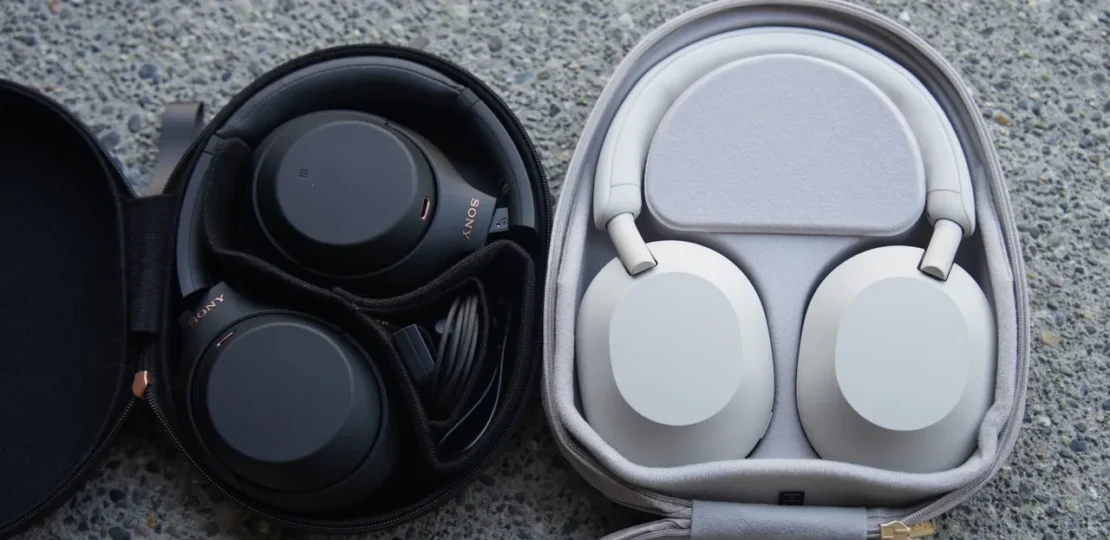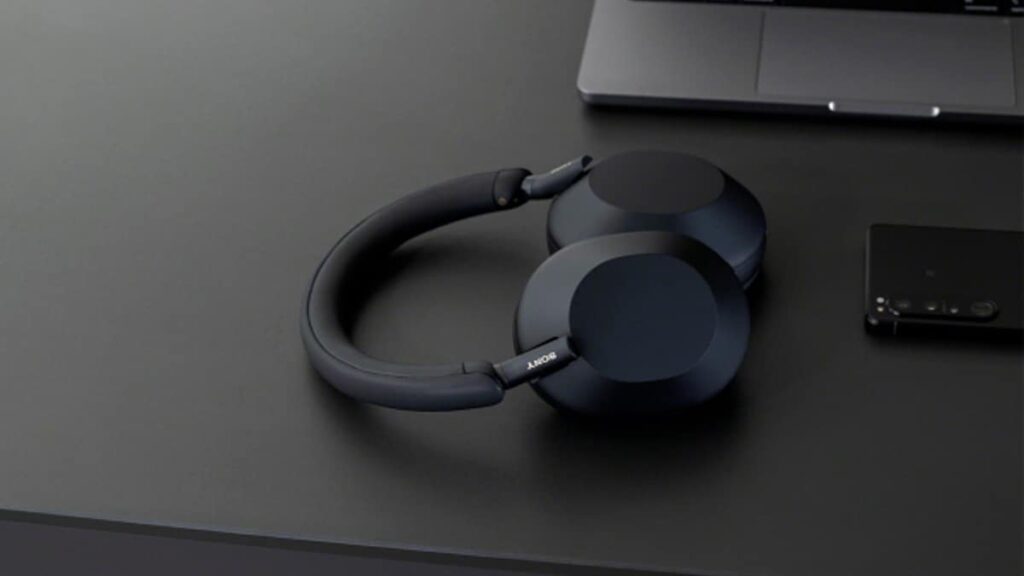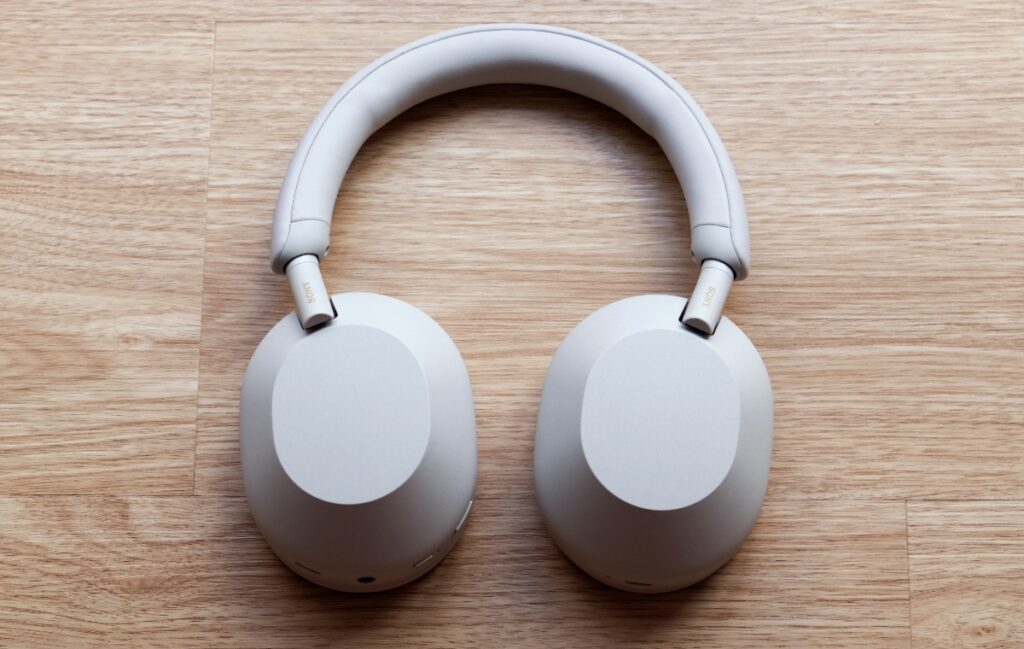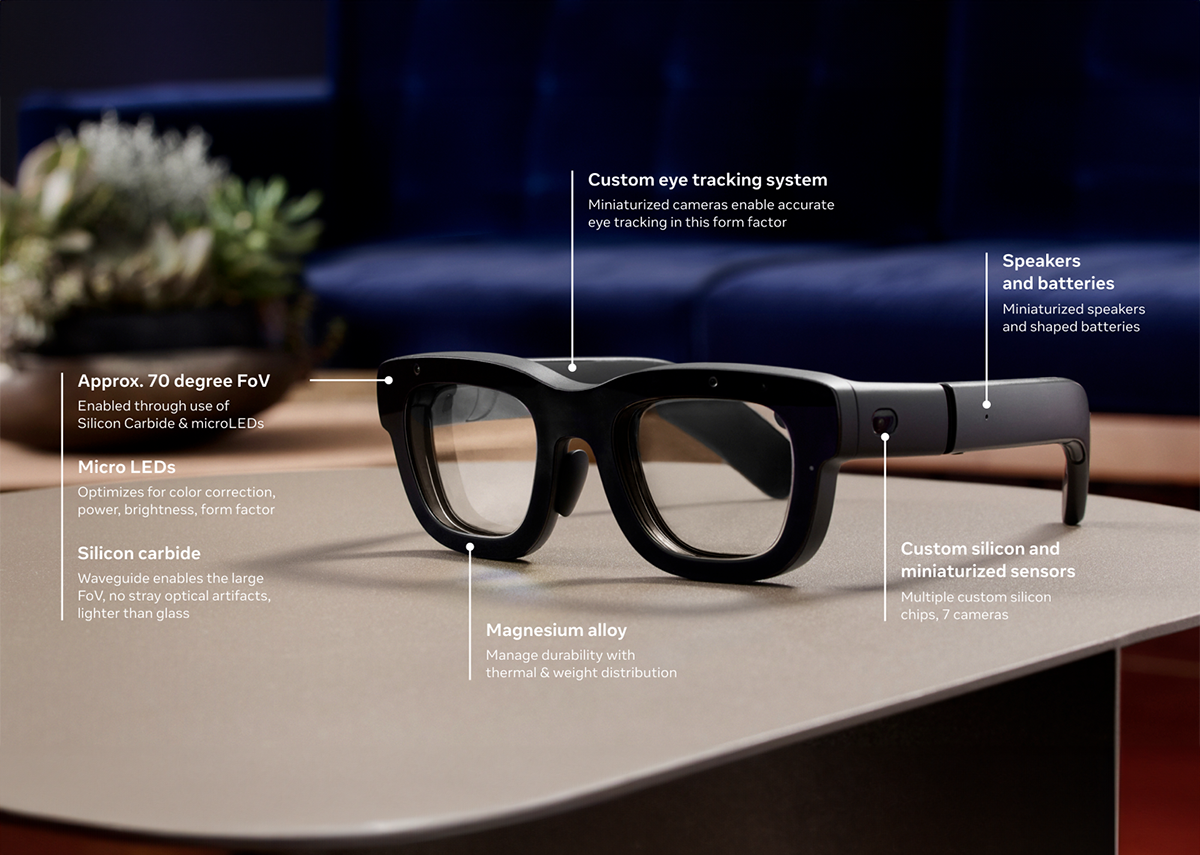Sony WH-1000XM5 Review: The Ultimate Noise-Cancelling Headphones?
January 21, 2025 | by ranazsohail@gmail.com

Noise-canceling headphones have been at the top of their game for years, and while they’ve had a few tweaks here and there, the Mark 3 was really when they hit their stride. With better comfort, solid noise cancellation, and the addition of USB Type-C, they were essentially the gold standard. The Mark 4 brought multi-device support into the mix, but aside from that, not much changed—they still looked the same, sounded amazing, and were a no-brainer recommendation.
But the new Mark 5s? They’re a big shift from that formula. Some of the changes I’m really into, but there’s one major update that I’m not so fond of.
First thing’s first: does the sound improve? I want to talk about the design first because it’s a big change. The new look is much sleeker—cleaner, sharper, and more minimalist. You still have the dark color option, but there’s also a lighter, cream-colored version now. The new design has some clear upgrades: the ear cups are bigger and wider, and the vegan leather feels way softer. Honestly, it’s kind of shocking how much more comfortable it is. The whole build is lighter too, making these the most comfortable noise-canceling headphones I’ve ever worn.
The touch controls are still there on the right ear cup for things like skipping tracks and pausing, and the on/off head detection is still working, even though they’ve removed the plastic cutout from the ear cups. Another change is the microphones—there are now eight in total, four on each side, up from just four before. I’ll get into how that affects noise cancellation and voice quality in a second, but it’s nice to see they kept the design minimal while hiding the mic slots really well.
I still feel like the new design is a bit of a downgrade, and there’s one big reason for that. Why do you buy noise-canceling headphones in the first place? For travel, right? The older models were basically the best because they were super comfy, had great noise cancellation, solid sound quality, and a ton of features. But the real selling point was that they folded up neatly into a small case. You could just toss it in your bag, and you were all set.
Now, with the new design, they don’t fold at all. Instead, they use this sliding headband—kind of like the Bose 700s, AirPods Max, and a bunch of other recent headphones. That’s the only way to adjust the size. So, no more compact folding, which means the case is a lot bigger now.
The case itself is actually pretty cool. It looks like a modern backpack without straps, with these angular, origami-style folds along the sides. Inside, there’s a magnetic flap that opens to reveal a compartment for your charging and audio cables. It’s a really nice case, basically identical to the Bose 700s’ case, but it’s definitely bulkier.

With Bose, when they introduced the 700s, they still kept the QuietComfort line around, so the QC45s still fold down just like the older models. The AirPods Max are another example—they’re premium headphones, but they’re not exactly the easiest to travel with, even though I still try to make them work. These new WH-1000XM5s are supposed to be the follow-up to the Mark 4s, which seems a little risky. The good news is, Sony is keeping the Mark 4s in the lineup. The new Mark 5s will cost $400, while the Mark 4s are priced at $350, but you can already find them for as low as $329 or even $300, which makes the Mark 5s look like a decent deal.
Putting the design issue aside, though, the WH-1000XM5s are still great headphones—premium, lightweight, and super comfortable. Plus, they’ve really stepped up the noise cancellation this time around.
I’ve been saying for years that these are the best when it comes to travel headphones, especially for blocking out white noise—airplane engines, road noise, all that stuff. They do an amazing job. As soon as I put these on, though, I could tell the noise cancellation has gotten even better. It still crushes the deep rumbles, but now it’s also better at blocking out higher-pitched sounds—things like appliances, whiny noises, and even human voices.
The last Sony model had incredible noise cancellation, but these are a step up, thanks to the extra microphones and a more powerful processor. Like with most noise-canceling headphones, these also have a transparency mode, and you can adjust it in the app with 20 different levels of how much outside sound you want to let through. The transparency mode is really good—better than Bose—but I still think the AirPods Max are on another level when it comes to how natural the outside world sounds. With the AirPods, it feels like you’re not even wearing headphones at all; everything comes through crystal clear, including voices. These don’t quite reach that level. They sound more like a slightly muffled version of reality, especially with voices and higher frequencies. Even with the “enhanced voices” setting, it still doesn’t match the clarity of the AirPods Max.
As for sound quality, though, they’re still excellent, just like last year’s model. The new 30mm carbon fiber driver makes a difference, and if you have the right phone and music source, you can still get L-back support. Overall, if you’re using an Android phone, I’d say these are some of the best-sounding noise-canceling wireless headphones you can get.
They don’t sound as good as AirPods Max when paired with an iPhone—they’re not as full, crisp, or balanced—but that’s probably a luxury for iPhone users with $550 to spend. But honestly, there’s something almost magical about really good noise-canceling headphones.
I could be in a busy, noisy place, where my brain is telling me it’s loud, but with these on, I’m hearing almost complete silence behind this perfect, isolated baseline. And then, when a song kicks in, I can pick out every little detail of the vocals, like I’m sitting in on a live recording session. It’s just incredible. That’s the real magic of these headphones. There were rumors that battery life might go from 30 hours to 40 hours, which would’ve been insane, but no—you’re still getting the same 30 hours as the Mark 4s. Honestly, that’s been about right in my experience so far. Would 40 hours have been nice? Sure, but 30 is still really solid.
The real improvement is the charging. You can plug them in for just three minutes and get three hours of playback. That’s perfect for when you’re in a hurry and need a quick charge before heading out. It’s a travel-friendly feature, which brings me back to the main point: these are designed as travel headphones. But with that, they no longer fold up, so they’re bigger and a little trickier to pack compared to the last version.
And here’s a tiny thing that bugs me, though it might seem small: With the Mark 4s, if you wanted to quickly take them off and didn’t feel like messing with “hold to speak” or talking to someone, you could just fold them down and set them facing down. They’d stay like that while you did your thing. With the Mark 5s, though, if you wear them the right way (left on the left, right on the right), they don’t fold flat—they only fold up. It’s not a huge deal, but for $400, it’s one of those little features the old ones had that would’ve been nice to keep around.

If you’re thinking about picking up these headphones, here’s a more thoughtful recommendation: If you’re using an Android phone, have a big enough bag, and plan to use them for travel, music, calls, or work, these headphones are going to be fantastic. You get the Sony app, which lets you customize everything, and you can even use LDAC for high-quality audio. They sound great, perform well, and are super comfortable. Honestly, I really like these headphones.
But, if you’re not in that specific group, I’d say consider the WH-1000XM4s instead. Why? Well, for starters, they’re much cheaper. They also fold down, so if you need something more compact to fit in your bag, they’re a great option. And here’s the thing: they’re like 90% of the WH-1000XM5s. The sound is almost identical, and while the XM5s have a trendier, more premium look, you’ll still get the same comfort and battery life with the XM4s. The main things you’re missing are slightly faster charging and the extra microphones and processors that improve noise cancellation and voice quality.
As for the audio quality, here’s a test of the WH-1000XM4s. It’s not perfect—it’s decent, but the mic picks up some background noise. It works fine for calls or anything where you need to talk through the headphones.
Now, for the WH-1000XM5s, the audio is definitely clearer. It isolates the voice a little better, even with the same background noise. It’s not a huge difference, but it’s definitely an improvement. All in all, these are solid for calls or work where you need to use the built-in mic.
I have a feeling Sony saw what Bose did with the 700 series—the sliding design and magnetic case—and thought, “We can do that too.” So they made a version of their own, but bigger. The design has a larger footprint, which I find a bit annoying, but honestly, these are still really good, really comfortable, high-quality noise-canceling headphones for $400. The only downside? Sony’s awful naming conventions. But beyond that, these headphones deliver exactly what you’d expect.
That’s it!
RELATED POSTS
View all


